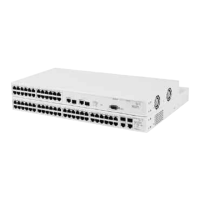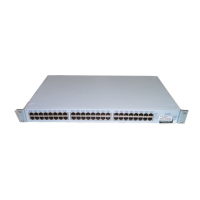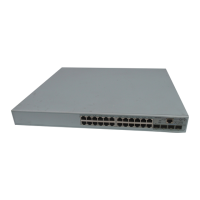58 CHAPTER 7: STATUS MONITORING AND STATISTICS
When using the RMON features of the Switch, note the following:
■ After the default sessions are created, they have no special status. You
can delete or change them as required.
■ The greater the number of RMON sessions, the greater the burden on
the management resources of the Switch. If you have many RMON
sessions, the forwarding performance of the Switch is not affected but
you may experience slow response times from the Web interface.
Alarm Events You can define alarms for the Switch. The events that you can define for
each alarm and their resulting actions are listed in Table 5
.
Alarms A new or initialized Switch has the following alarm(s) defined for
each port:
For more information about the alarms setup on the Switch, see
“
Alarm Events” on page 58.
Events A new or initialized Switch has Events defined for use with the
default alarm system.
Tab le 4 RMON support supplied by the Switch
RMON group Support supplied by the Switch
Tab le 5 Alarm Events
Event Action
No action
Notify only Send Trap.
Notify and filter port Send Trap. Block broadcast and multicast
traffic on the port. Recovers with the unfilter
port event.
Notify and disable port Send Trap. Turn port off.
Notify and enable port Send Trap. Turn port on.
Disable port Turn port off.
Enable port Turn port on.
Notify and unfilter port Send Trap. Stop blocking broadcast and
multicast traffic on the port.
System started
